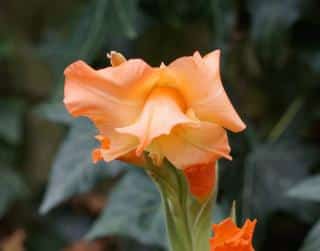

In flower beds, pot arrangements or smack in the middle of the lawn, summer-flowering bulbs provide colors and enjoyment.
Plant them together in spring and savor them all summer long.
Dahlia, lily, crocosmia, gladiolus, balisier, agapanthus… Summer flowering bulbs exist in multiple forms and hues. All are easy to grow, are amazing in flower beds, garden boxes and ultimately, bouquets. Native to South Africa, South America or Australia, these love sun and tolerate poor soil, as long as water drains away well.
If your soil is full of clay and rather heavy, prefer growing in pots, because too much moisture makes bulbs rot.
 The planting of summer flowering bulbs must be performed when the soil has warmed up already, once the last frosts have passed. In mild climates, this is possible as early as March; in other climates, better to wait for the month of April. Plant your bulbs grouped together to compound the impact of each into a spectacular show.
The planting of summer flowering bulbs must be performed when the soil has warmed up already, once the last frosts have passed. In mild climates, this is possible as early as March; in other climates, better to wait for the month of April. Plant your bulbs grouped together to compound the impact of each into a spectacular show.
Mix species and varieties, remembering to place taller, long-stemmed varieties as a background to shorter species.
Before planting, lighten the ground with a spade, remove rocks and weeds. Place each bulb upright in a hole which is twice as deep as the bulb is tall (about 4 inches (10 cm) on average for gladiolus and crocosmia), with the pointed tip facing to the sky. Backfill with earth on top without pressing down, so that the plant may not find it too hard to shoot out of the ground.
In pots and garden boxes, don’t pack the bulbs too close together. Place your container in the sun and water regularly.
The blooming of bulbs varies a lot depending on the species, from 4 to 6 weeks for some species, or much longer for others like dahlia, which bear flowers until the autumn frost spells remind them to settle down for winter. That is when to pull them out, cut the stems down to a length of 4 inches (10 cm), and set them in a cool, dry shed to protect them from freezing before planting them anew in the following spring.
For other plants such as lily or crocosmia, it’s even easier because bulbs can spend the winter where they were planted from one year to the next.
Laure Hamann